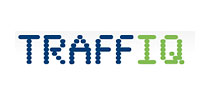 TRAFFIQ announced yesterday the addition of real-time bidding capabilities to its platform and the launch of TRAFFIQ Trading Desk which “gives advertisers the ability to buy into the majority of exchange inventory across the web.” Read the release.
TRAFFIQ announced yesterday the addition of real-time bidding capabilities to its platform and the launch of TRAFFIQ Trading Desk which “gives advertisers the ability to buy into the majority of exchange inventory across the web.” Read the release.
TRAFFIQ Chief Product Officer Eric Picard discussed the new trading desk and its features.
AdExchanger.com: Now that you’ve added the ability to buy across exchanges with the Trading Desk’s RTB capabilities, do you think of at least part of the company as a demand-side platform?
EP: The current crop of Demand-Side Platforms support programmatic media buying to get access to audience based inventory. But that’s exactly what TRAFFIQ does – our platform is designed to put the power into the hands of the buyer. Whether a buyer needs to buy guaranteed inventory, or wants access to audience inventory via real-time bidding inventory source, they will get access to it via one platform. We also support some supply-side needs and we frequently work with multiple technology partners at the request of our customers to provide as seamless a customer experience as possible.
How will you tie exchange and guaranteed buying together for your clients? Can you provide attribution capabilities such as showing how spot buying affects the final conversion versus guaranteed buying?
Buyers have a primary need to meet the goals of the advertiser in a cost effective and ROI positive way. An RFP created in the buying process typically includes a broad set of goals. But publisher ad platforms can’t predict inventory very accurately to begin with, and when lots of targeting parameters get assigned to a buy, campaigns become very labor intensive for the publisher to deliver. This leads to RFP responses that are a bit more broad than the buyer would like, and even with ‘relaxed’ delivery criteria – publisher ad platforms frequently under-deliver against the contract. We’re looking at ways to solve this problem without abandoning guaranteed buying with RFPs, where the buyer can supplement their RFP-based guaranteed buys with audience-based buys available from numerous sources, but using verifiable data to define the audience. Plus we’re adding capabilities to manage Paid Search that will ultimately give customers access to one suite of tools for managing guaranteed media buys, real-time bidded display buys, and paid search. This will give the buyer the best of all worlds, where they can blend campaigns across methodologies, and track all the campaign activity regardless of inventory source in one seamless view. They can buy for reach, they can buy for performance, or they can blend back and forth between the two.
Given your guaranteed inventory sources, are there any plans in sourcing unsold inventory from those sources for spot marketing buying purposes?
For clarity – let me just explain that TRAFFIQ works with the sell-side to provide publishers and networks with guaranteed demand, where they’re able to have control and transparency in how that inventory is sold – and we provide buyers with the same – control and transparency in how their guaranteed buys are managed. This gets both sides of the transaction what they really want – clarity, control, predictability and flexibility.
Is the product in-market today? How much does it cost – and do you see the client for your Trading Desk product any different than your guaranteed inventory buying capabilities?
TRAFFIQ continues to offer our core platform to buyers for free, and is paid based on revenue share with our supply side partners. We offer a service component as well, which does have a minimum spend that most of our customers easily cover. This is where we’ll initially be offering the Trading Desk capabilities – as a managed service. But we are absolutely expanding the capabilities over time to our self-service offering, and you should expect this to evolve a lot as we get closer to market. Based on customer feedback, we expect our agency partners to use all the offerings of the platform, and we’ll see our customer base broaden to match our newer broader capabilities – including growth from both performance and brand buyers, and the availability of even more publisher partners.
By John Ebbert











